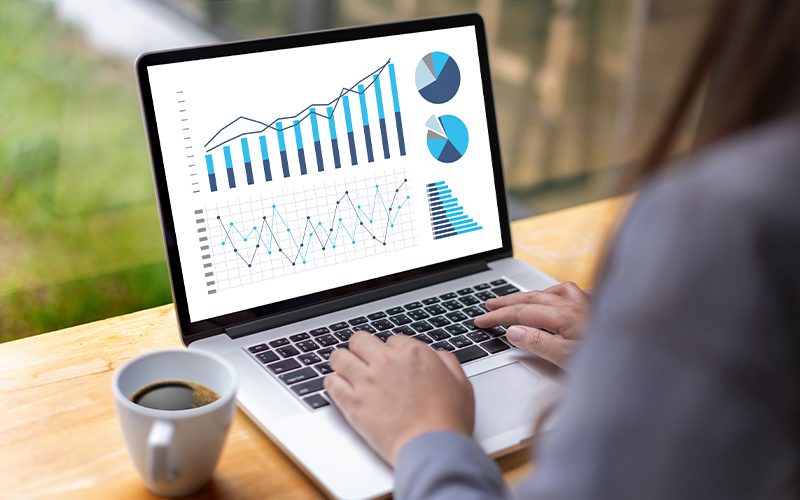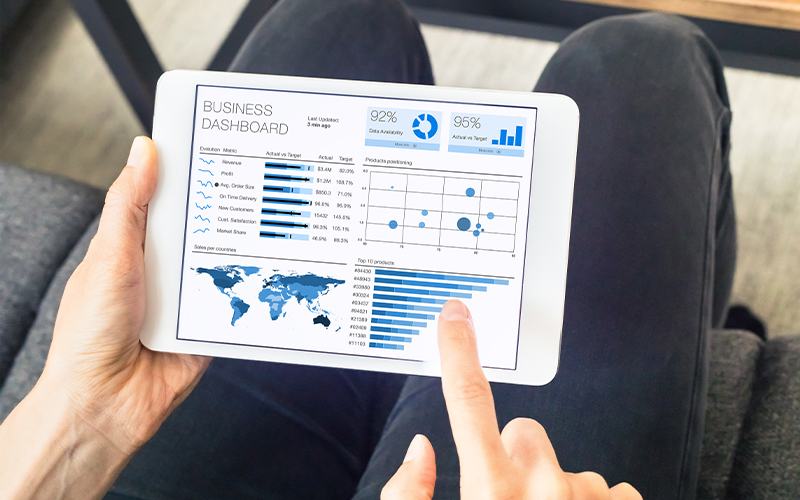BPM Analytics
Descriptive analytics: Finding answers in your business data
Yes, you have truckloads of data. But what can you do with it? Descriptive analytics experts will state, ‘A lot!’
As an umbrella concept, analytics helps businesses examine, analyse, and draw actionable insights from past incidences, current happenings, and potential events in the future. By providing a historical review of a business’ key areas, including operations, financials, sales, stakeholders, and customers, analytics helps make sense of facts and figures.
Among the various types of data analytics or business analytics, there is one that serves as the starting point for any business — descriptive analytics.
Let’s find out what makes descriptive analytics such a crucial asset for business leaders across industries since it’s used by about 90% of businesses.
What is descriptive analytics?
As the term suggests, this type of analytics refers to the collection, organisation, and presentation of historical data based on what has happened in the past. This can help businesses in enhancing their digital capabilities and the pace at which they respond to newer challenges.
Descriptive analytics is considered the simplest form of data analytics because it never attempts to delve into the why and how — it simply establishes the what. Neither does it go beyond surface-level analysis, and nor does it attempt to establish a cause–effect relationship.*
The main types of descriptive analytics include:
Measures of frequency
Central tendency
Dispersion or variation
Position
Descriptive analytics tools, techniques, and methods
So, how does descriptive analytics work? Based on data derived through observations, surveys, case studies, and past events, descriptive analytics uses tools like:
Mathematics and statistics
Tabulation of metrics
Reporting of trends
Visualisation tools
Using any (or a combination) of the above tools, descriptive analytics attempts to establish exactly what happened.
The process begins with establishing the KPIs and collecting relevant data. This is followed by data preparation, processing, and analysis to find patterns. And, finally, the inferences, patterns, or trends are presented.
What can descriptive analytics do?
To track a business’ performance over time, and in comparison to the market, descriptive analytics processes valuable data and information to provide insights into:
-
Historical trends:
By comparing various parameters over a period of time, a business can gain insight into its historical trend. For example, by calculating quarterly, monthly, and annual revenue growth as a percentage and comparing it with previous time periods, a business can analyse its sales growth. -
Current business performance:
Descriptive analytics helps monitor crucial metrics relating to departments, groups, individuals, and business overall. -
Virtues and shortcomings:
A business can tap into descriptive analytics to compare the performance of different groups based on a set of metrics such as revenue and expenses, industry averages, market position, etc.
What are the top advantages of descriptive analytics?
The importance of descriptive analytics can’t be underlined enough because it can successfully:
- Summarise past events and occurrences across departments and functions. For instance, it can provide a comprehensive overview of your region-wise sales, customer attrition rates, marketing campaigns, etc.
- Conduct real-time analysis of data flowing in, like the data transmitted by IoT devices (connected to your inventory, sales, etc.).
- Provide a bird’s eye view of exactly ‘what’ happened, enabling you to study cases in a silo or together and apply the next level of analytics to understand reasons for such occurrences.
Why is descriptive analysis relevant to a business?
Any business that wants to decode and make sense of mountains of data by understanding past events must invest in the power of descriptive analytics. Studying this data through descriptive analytics will prevent future slip-ups and ensure better results.
Descriptive analytics also enables better decision-making at every level and department of an organisation. Let us look at a few examples.
- Your finance team can use descriptive analytics to track growth or decline in your monthly and yearly revenues.
- The marketing team can discover which social media platforms or campaigns delivered the best ROI during a particular period.
- Descriptive analytics makes tracking the varied demand for different SKUs across various locations possible for the operations department.
- The sales team can learn which customer segment generated the highest sales figures in the past.
Based on such function-specific applications of descriptive analytics, department heads or business leaders can make more informed choices about the future.
How Infosys BPM can help you leverage the power of descriptive analytics?
With a relentless focus on augmenting business outcomes, Infosys BPM combines the untapped potential of your data with our proven domain expertise and industry-leading technologies.
We take a proactive, predictive, and custom metric-driven approach, enabling you to manage risks and ensure sustainability in the short and long run. Learn how our range of analytics services and solutions — from advisory to model development, support, maintenance and enhancements, and statistics/data science — can help drive process optimisation and innovation.
Do more with your data — do more with Infosys BPM.
*For organizations on the digital transformation journey, agility is key in responding to a rapidly changing technology and business landscape. Now more than ever, it is crucial to deliver and exceed on organizational expectations with a robust digital mindset backed by innovation. Enabling businesses to sense, learn, respond, and evolve like a living organism, will be imperative for business excellence going forward. A comprehensive, yet modular suite of services is doing exactly that. Equipping organizations with intuitive decision-making automatically at scale, actionable insights based on real-time solutions, anytime/anywhere experience, and in-depth data visibility across functions leading to hyper-productivity, Live Enterprise is building connected organizations that are innovating collaboratively for the future.






